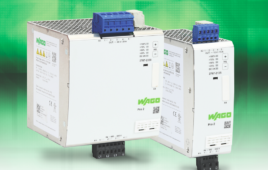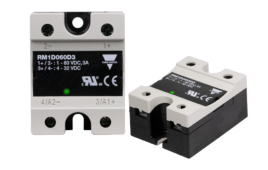As gasoline prices continue to climb in the U.S. and Europe, the need for alternative energy for cars looms large. Electric mobility is becoming a market to be taken seriously. This sector refers primarily to vehicles that are driven by electric motor. Modern electric cars can reduce CO2 emissions in urban areas and, insofar as they are powered by regenerative energies, they can make a contribution to reducing greenhouse gas emissions.

beCHARGED’s modular, polycarbonate charging stations bolster the electric charging infrastructure. The online database enables drivers to check charger availability to avoid time and electron-sapping waits.
Ten years ago, anyone who thought about an electric car probably envisioned a small vehicle that achieved very limited mileage before the battery needed to be re-charged. Today, well-known manufacturers offer attractive vehicles that have an electric connection instead of a gasoline tank. These electric cars as well as hybrid vehicles which, in contrast to the electric motor also have a combustion engine, draw their electric energy from on-board rechargeable batteries. In order to re-charge the energy efficiently, drivers need automated, easy-to-operate charging stations that identify users, measure the electricity delivered, and bill the customer.
The WAGO-I/O system handles these tasks for beCHARGED’s charging stations. beCHARGED is a Belgium-based firm that develops and operates charging stations for cars, motorcycles, scooters, bicycles, and boats. According to Wim Iliano, Technical Director at beCHARGED, “The modular WAGO-I/O System is very flexible. We have to integrate various voltage levels and interfaces for different types of vehicles. WAGO’s rail-mounted terminal blocks with DC/DC converters provide excellent solutions.”

Compact Wago-I/O programmable Ethernet TCP/IP controller, terminal blocks, and DC/DC converters meet the compact dimensions required by beCHARGED stations
The WAGO units are fully automated and perform the following tasks: Customer identification, Electricity Measurement, Billing, and Operator-guided communication
Customer identification is handled by a radio frequency identification (RFID) read system which has been integrated into the WAGO controller via a serial interface. Information about the energy quantity dispensed, charging times, and error messages come together centrally in the Ethernet controller and are compared wirelessly with a database on the Internet.
Customers can access a website in advance to determine whether a charging station is available. This prevents long wait times and unnecessary driving to alternative stations. The Ethernet controller comes in a variant for an expanded temperature range from -20°C to 60°C so that fault-free operation is guaranteed. The WAGO systems are vibration-proof, maintenance-free, and temperature resistant.
WAGO
www.wago.us
Filed Under: AUTOMATION, Automotive, Green engineering • renewable energy • sustainability, Energy management + harvesting, ELECTRONICS • ELECTRICAL, Terminal blocks





Tell Us What You Think!